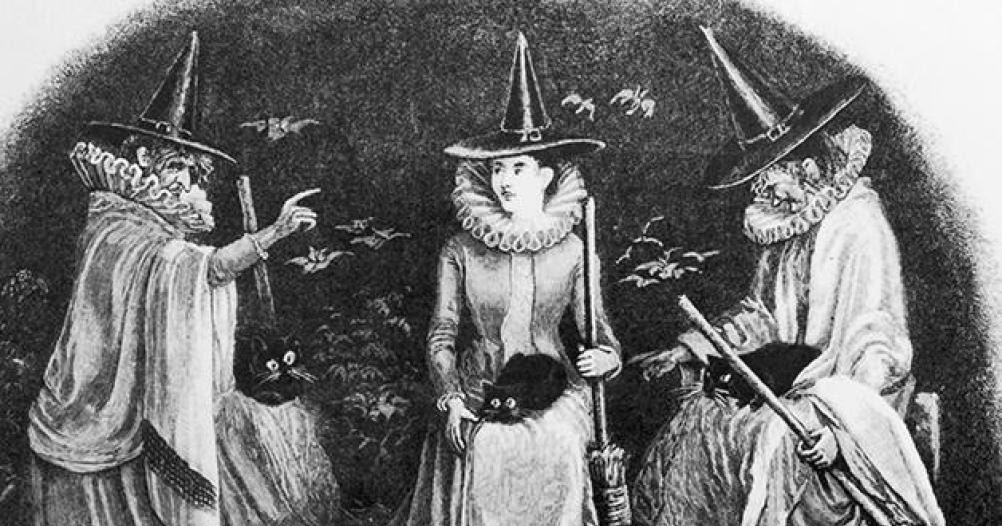


The typical broomstick associated witchcraft was also equally associated with these alewives. One should keep in mind that the Salem witch trials were contemporary with early modern Europe (1400-1800), and so many of the reasons the women in Salem were accused of magic (outside of the extraordinary accusations of devil-dancing, and so on) found their beginnings in rumors started surrounding these alewives. Suddenly, there appears to be visual evidence of some sort of magical workshops-at least, that was what the Church and male-run guilds claimed by the early modern period.ĭespite that, brewing was long a sensible career choice for women since the tasks aligned with household jobs like cooking, cleaning, etc., it is also believed that the modern perception of "witches" was influenced by the actions and tools of the alewives. Such a creation sounds more than a little bit like a magical potion, does it not?Īdded to the fact that women who chose to run alehouses put themselves in a public space, exposing their brewing process to all who came through their doors. The woman toiled over her bubbling brew, a thick mixture of natural ingredients that, after fermentation, would eventually create a drink that could cause any man to lose total control if he overindulged. Now, briefly consider the aforementioned points outside the economic benefits: women, single or widowed in a time when being husbandless was considered taboo, working over a hot, black cauldron while young children gathered and collected her ingredients. ( National Women’s History Museum ) Bubbling Brews and Broomsticks Though her children would not necessarily stay with their mother forever in this role, it is likely the woman could gain a significant income and reputation before her children left to then be able to continue on without them, or even invest in help.īrewing beer at Jamestown. Once again, having children who knew the procedure of brewing would have allowed the woman more freedom to run a proper alehouse if she chose to do so. In addition to selling ale in public spaces, the households of these alewives were known to take on secondary roles as alehouses, where the women brewed and sold their product in a space akin to bars or taverns. A Patriarchal Portrait of a Witch: Warning of Witchcraft in the Female Wiles.The alewife suddenly had twice as much (or more) to sell for profit. Including the family in the production of alcohol also led to an increased supply, particularly if the children learned to work independently. The alewife would be able to monitor her children (rather than sending them to school or hiring help, especially if neither could be afforded), teach them household tasks, and ensure her children stayed out of trouble, all the while working toward a productive financial outcome. If she had a husband who had a position elsewhere, or was a widowed mother, it was a very sensible idea to incorporate her children. It was not uncommon for women to utilize their children in their brewing endeavors. Further, as there was no shortage in the need for alcoholic beverages (as it was the primary drink in a period when water was unclean), the process was beneficial to the family of the brewer as well. They already possessed the skills and tools needed to begin make ale and beer. The practice, therefore, was rather economic for women to undertake. Women kept the kitchen in order, made dough and baked bread they planted and grew herbs, ground grains and boiled ingredients in a large black cauldron over a sweltering fire for stews. The most obvious is the simple fact that women were tasked with proper kitchen chores, and brewing required many of them. Brewing Was for Womenīrewing belonged to women from the medieval to early modern periods for a variety of reasons. Due to the alewives' skills in the kitchen, fashion sense, and the eventual rise of urban guilds, however, the alewife soon became a term synonymous with "witch." It is likely from these practices that much of the modern views of the stereotypical witch began. It was from this alcoholic context that the trade of alewives arose, women in the Middle Ages through the early modern period who brewed and sold alcohol as a means of income. Yet brewing has a very human meaning as well, one that revolves around the avarice of alcohol and its never-ending demand by consumers. "Brewing", "herbs," "broomsticks," "woman." When one hears these words together, most often the assumption is that the person in question is a witch.


 0 kommentar(er)
0 kommentar(er)
